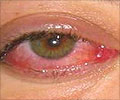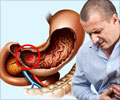A study published in the October issue of BJS has shown that inexpensive dressings are just as effective as expensive silver dressings in the majority of cases. This means that the UK National Health Service could save millions of pounds a year by routinely using inexpensive dressings to treat venous leg ulcers.
Researchers, led by Professor Jonathan Michaels from the Sheffield Vascular Institute and Professor Bruce Campbell from the Royal Devon and Exeter Hospital, studied 213 leg ulcer patients who received either standard low-adhesive dressings or antimicrobial silver-donating dressings.There were no significant differences between the two groups when it came to healing rates and quality of life, but the silver dressings were significantly more expensive.
Median healing time for the group treated with silver dressings was 67 days, with 59.6 per cent healing by 12 weeks, compared to 58 days and 56.7 per cent for the control group. By six months, 85 per cent of the silver dressing group and 77 per cent of the control group had a healed ulcer and by one year the figures were 96 per cent for both groups.
But the average cost of treating a patient with silver dressings was £417.97, including staff time and materials, more than 30 per cent higher than the £320.12 for the control group.
"Latest figures from the National Prescribing Centre suggest that wound dressings cost the NHS £100 million in 2006-7, excluding staff time, and that silver dressings accounted for a quarter of this cost" says Professor Michaels.
"However, until now, no studies have been published examining the cost-effectiveness of using antimicrobial silver-donating dressings beneath compression therapy to treat venous leg ulcers."
Advertisement
Multilayer compression bandaging is now the standard treatment for venous leg ulcers, with dressings placed over the actual wound to promote healing.
Advertisement
"The use of antimicrobial dressings has become widespread, particularly for venous ulcers, based on an anticipated advantage over simple dressings. As venous ulcers are common, and antimicrobial dressings are relatively expensive, their use has potentially large consequences for health services."
The VULCAN study, funded by the NIHR Health Technology Assessmentprogramme, was carried out over a two-and-a-half year period on patients who had had active ulceration of their lower leg for more than six weeks. Patients were recruited from South Yorkshire and Devon, mainly from primary care clinics specialising in leg ulcers.
Patients with an average age of just under 71 were randomised to receive either silver or low-adhesive dressings by the trial research nurses. Products from a range of manufacturers were used, chosen by the clinician caring for the patient.
The primary outcome measure was healing at 12 weeks, in line with national guidelines, and was defined as complete epithelialization of the ulcer with no scab. Secondary outcome measures were healing rates at six months and one year, health-related quality of life, costs and resources used and cost-effectiveness.
"Our study clearly shows that there is no evidence to justify the use of the more expensive silver dressings in routine venous leg ulcer care, as they offer no real clinical advantage or improvement in quality of life, but are significantly more expensive" concludes Professor Michaels.
Professor Charles McCollum, from the Academic Surgery Unit at the University Hospital of South Manchester agrees.
In an editorial on the research, he points out that chronic venous leg ulcers affect more than three per cent of the elderly population in the UK.
"They are difficult to heal and the annual cost to the National Health Service is estimated at £450 million, mostly for dressing materials and nursing time" he says.
"There is no evidence that 'modern' dressing materials influence the healing process and expenditure on these products cannot be justified.
"It is regrettable that, after three decades of research, there is still no evidence to justify using anything other than a simple, inexpensive low adhesive dressing under multilayer compression in the management of venous leg ulcers."
Source-Eurekalert
RAS













